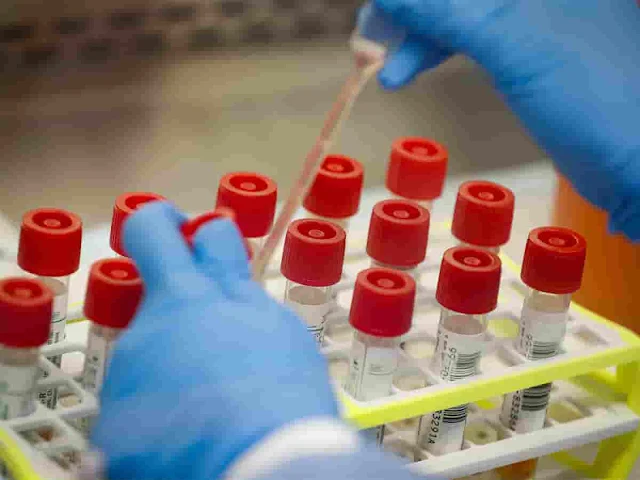For
the primary time, the planet Health Organization has published an inventory of
diagnostic tests that it considers essential to each health care system within
the world.
The
list, published Wednesday, is analogous to the agency’s essential medicines
list, which the W.H.O. launched in 1977.
In
its day, the medicines list was revolutionary because it had been both a
worldwide guide to rational treatment regimens and since it fostered the thought
that certain medicines were so important that they ought to be available to the entire world, no matter price.
The
W.H.O. expert panel that created the diagnostics list hopes it'll eventually be
even as revolutionary.
“I’m
thrilled about it,” said Dr. Madhukar Pai, director of worldwide health for
McGill University’s school of medicine and a member of the panel that spent two
years creating the list.
“But
I’m very aware that publishing an inventory in Geneva won't magically make
malaria test kits available in Vietnam. Each country has got to make its own
list to offer the thought teeth.”
The
W.H.O. lists 113 diagnostics.
Fifty-eight
are the routine blood and urine tests that are run in most American medical
offices: measurements of red and white blood cells, blood glucose, liver
enzymes, and so on, plus tests for one-time events like pregnancy or
transfusion blood-typing.
The
remaining 55 are tests for diseases the W.H.O. considers of highest priority:
H.I.V., tuberculosis, malaria, hepatitis B, hepatitis C, HPV, and syphilis.
Without
a diagnosis, care is crippled, Dr. Pai said.
“I
grew up in India and sometimes worked without diagnostics, managing with
whatever I could get,” he said.
''If
you don’t know someone has hep C or drug-resistant TB, how are you getting to
cure them?” Panel members hope to soon expand the list by adding tests for
viruses like flu, antibiotic resistance in bacteria, cancer, a heart condition,
and other ills.
They
also hope to feature an important “devices” category to incorporate diagnostic
equipment like X-ray and CT scanners, ultrasounds, fiber-optic scopes,
automated blood analyzers, PCR machines, and so on.
Although
many of those tests and devices are around for many years, there's great
variance within the ways diseases is diagnosed in several countries.
Worse,
doctors often prescribe antibiotics or other drugs without diagnoses, which may
hurt patients and speed drug resistance.
Besides
setting universal standards, the list is supposed to encourage countries to
create the laboratories needed to try to do the tests. it's also meant to offer
the diagnostics industry — which is way more fragmented than the pharma
industry — targets to aim at, which should lower prices.
If
a dozen manufacturers know that a particular sort of blood analyzer or CT the machine is that the global standard, for instance, they'll compete to form it,
driving prices down.
Forty
years ago, before the essential medicines list was published, poor countries
were largely at the mercy of drug companies — which were often leftover from
those countries’ colonial periods.
Companies frequently offered only the
medicines they wanted to sell instead of the foremost sensible choices.
When
the list was created, it included basic, affordable drugs.
“But
the pharma industry still hated it,” said Dr. Hans V. Hogerzeil, a former
W.H.O. official who oversaw the list for 25 years.
“They
were very powerful within the 1980s, and that they said, ‘If you call these
essential, you’re saying our others aren't .’”
In
2002, the W.H.O. raised the stakes by adding a dozen anti-H.I.V. drugs.
It
was the peak of the worldwide AIDS crisis, and corporations were refusing to
lower prices on antiretrovirals, which then cost up to $15,000 a year.
Listing
them was “absolutely” the W.H.O.’s unspoken effort to shame those companies,
Dr. Hogerzeil said. The action, he said, led to an intense backlash not just
from the industry but from our government, because many companies were
American.
A year later, plans to make an “essential devices” list were blocked.
“We
were stopped from issuing it,” he said. “Having one begin now would really be a
breakthrough .”
Deciding
which medicines were essential also opened the way for the Indian generics
industry to start producing equivalent drugs at a fraction of the worth.
That the industry is now the main supplier to Africa, Asia, and Latin America.
Now,
Dr. Hogerzeil said, finding ways to lower prices for poor countries or to
license their inventions to low-cost producers “is just a fact of life for the
pharma industry.”
Suzanne
Rose Hill, director of essential medicines and health products at the W.H.O.,
said several factors spurred the creation of the list.
A
2016 article within the New England Journal of drugs and lobbying by Dr. Pai
led her to convene an expert panel.
Then
the agency’s new director-general, Tedros Adhanom Ghebreyesus, made it a
priority because he wants to enhance medical care, she said.
In
contrast to 2002, “there has been no pushback from the diagnostics industry in
the least,” she said.
“They
see it as a possible market instead of a drag .”
The
next step, she said, is going to be to figure with countries like India, South
Africa, and Ethiopia that are building similar lists to ascertain how the
W.H.O.’s are often refined.
Jayasree
K. Iyer, executive of the Access to Medicines Foundation, which publishes a
biannual ranking of how well pharmaceutical companies do at getting their drugs
to the poor, said her foundation will monitor reactions to the new list.
“We’ll
see if it moves the industry, and if it moves hospitals,” she said.

0 comments:
Post a Comment